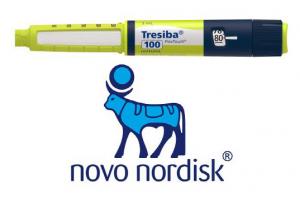
With the advent of the Fourth Industrial Revolution, there is a change in the existing medical clinical trial market, from a randomized clinical trial (RCT) to real-world data (RWD) and real-world evidence (RWE), industry experts say.
Instead of RCT, which is currently the most widespread clinical research method used to evaluate the efficacy of drugs, the importance of RWD obtained through actual treatment or prescription is increasing, and RWE gathered through RWD analysis, is also gradually emerging, they note.
As advanced country regulators are actively working on ways to secure and utilize RWE using electronic medical records, multinational pharmaceuticals are also moving in tune with trends.
For instance, Novo Nordisk has recently presented findings from the CONFIRM trial, which is the RWE study of Tresiba, in 4,056 patients at the Scientific Sessions of the American Diabetes Association (ADA) in June.
Novo Nordisk’s Tresiba (insulin degludec) is a once-daily, ultralong-acting basal insulin analog injection to treat people with type 1 or type 2 diabetes. The treatment forms a multi-hexamer under subcutaneous injection and has a uniform blood glucose lowering effect for over 42 hours. A 3 mL injection costs 16,876 won ($15) in Korea.
The CONFIRM study conducted a head-to-head retrospective and non-weighted-effect study with insulin glargine U-300 on type 2 diabetes using basal insulin for the first time, Novo Nordisk said in a press release Tuesday.
The primary endpoint for the CONFIRM trial was a change in blood sugar control (A1C) during six months. Secondary endpoint included the rate of hypoglycemia, the proportion of patients with at least one hypoglycemic episode and the rate of treatment discontinuation.
Results showed Tresiba significantly lowered A1C and rates of hypoglycemia in patients versus u-300 (-1.5% vs. -1.2%). For its secondary endpoint, the rate of hypoglycemic episodes in the Tresiba group fell by 30 percent compared to U-300, it said.
Also, people treated with Tresiba were also more likely to stay on their treatment. Those treated with U-300 had a 37 percent higher rate of discontinuing therapy after two years, the study found. Continuous applications are vital as diabetes is a chronic disease that the patient must manage for a lifetime, making the maintenance period more critical than the titration period.
“RWE can obtain the usefulness of a drug in real clinical situations, including various environments, and the overall usefulness of patients receiving actual treatment,” a company offici8al said. “The most important thing about medicines is to ensure the safety of patients and to achieve optimal therapeutic effects.”
The company expects that the importance of RWD and RWE will grow as the difference in the nature of the disease, the way the medication is used in each patient and adverse effect needs constant monitoring, the official noted.

